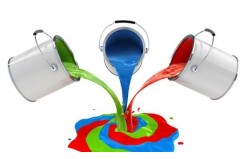Application
Is Barium Sulfate a White Precipitate?
When it comes to the world of chemistry, barium sulfate is a compound that often piques curiosity due to its fascinating properties. One of the most common questions asked in classrooms and laboratories alike is: Is barium sulfate a white precipitate?
Barium sulfate (BaSO₄) is an inorganic compound made up of barium and sulfate ions. It is widely recognized for its insolubility in water, leading to the formation of a distinctive white precipitate when mixed with solutions containing sulfate ions. This characteristic makes barium sulfate a key player in various chemical reactions and applications.
What Does "Precipitated" Mean?
Precipitation occurs when two soluble substances react to form an insoluble product. In the case of barium sulfate, when barium chloride is mixed with sodium sulfate, precipitated barium sulfate forms as a solid that can be observed settling at the bottom of the container.
Characteristics of Precipitated Barium Sulfate
The precipitated barium sulfate exhibits several notable characteristics:
- Appearance: It manifests as a fine, white powder or solid, easily recognized in laboratory settings.
- Insolubility: One of its most significant features is that it does not dissolve in water, which is crucial for its function in various applications.
- Non-toxic: Barium sulfate is considered safe for use in medical imaging, making it a reliable option for diagnostic procedures.
Applications of Barium Sulfate
The unique properties of precipitated barium sulfate lend themselves to numerous applications across different fields:
1. Medical Imaging: One of the most prominent uses of barium sulfate is in radiology. When ingested or administered, it provides a clear silhouette of the gastrointestinal tract in X-ray examinations.
2. Industrial Uses: Barium sulfate is commonly used as a filler in paints, plastics, and rubber, enhancing durability and providing a white pigment.
3. Laboratory Reagent: Chemists often utilize precipitated barium sulfate in qualitative analysis to identify the presence of sulfate ions in various samples.
4. Cosmetic Industry: Due to its non-toxic nature, barium sulfate is sometimes included in cosmetic formulations, contributing to opacity and texture.
How to Create Precipitated Barium Sulfate
If you’re interested in creating precipitated barium sulfate in a controlled environment, here’s a simple method to follow:
Materials Needed
- Barium chloride (BaCl₂) solution
- Sodium sulfate (Na₂SO₄) solution
- Beaker or mixing container
- Stirring rod
Procedure
1. Combine Solutions: In a beaker, slowly mix equal volumes of barium chloride and sodium sulfate solutions.
2. Observe the Reaction: Watch as a white precipitate of barium sulfate forms almost immediately.
3. Collect the Precipitate: Allow the mixture to settle, then filter the solution to collect your precipitated barium sulfate.
In summary, barium sulfate is indeed a white precipitate! Its unique properties and diverse applications make it an important compound in both scientific and industrial realms.




